Why should advocates and home visitors build partnerships?
Because home visitors are in some of the most intimate spaces in people’s lives — their home — over long periods of time, they develop trust while engaging with the whole family. And, advocates are often connecting with people during a time of vulnerability, fear, or concern about their partner’s behavior and how it is impacting the whole family.
Advocates are supporting survivors who often ask “can you talk to my partner? Can we get some help for them?” And, advocates often say “we are here for you, your children, but we don’t talk with the person causing harm.” Home visitors are engaging with the whole family to support the parent-child bond and help with concrete supports for everyone including the person causing harm.
Together, advocates and home visitors, are interested in preventing and reducing harm, in supporting families, and finding community-based solutions that work for everyone – we need to work together.
This partnership deepened our work – understanding how home visitors do their work has been helpful. I witnessed the good communication between home visitor and family members which made me feel safe and reassured me.
Advocate
Ultimately advocates and home visitors have shared values and goals
Home Visitors
Advocates
Ask what matters most
Listen
for parent priorities and identify parental resiliency and support the parent-child bond.
for survivor priorities and resiliency and identify partner and life generated risks.
Connect
with empathy, validation, non-judgement, and work collaboratively with the parent to reflect their strengths in their parenting, identify any supports, and provide education about child development, parenting and bonding, school readiness, and engage with the whole family.
with empathy, validation, non-judgement, work collaboratively with the parent to reflect their strengths in their parenting, identify any supports, and learn about the experience of coercion and abuse in their relationship and the impact on parenting, financial resources and the whole family.
Offer
concrete supports and community resources that match the self-identified parent priorities and needs of the children.
concrete supports, community resources and help navigating systems that match the survivor priorities. Analyze benefits and risks of systems that the survivor and their children interact with (by choice or not). Accompany the survivor to help them get what they want and need.
Honor
the expertise of the parent as the child’s first and best teacher.
the expertise of the survivor when reviewing the risks and priorities in their life and their past and current safer planning strategies.
Walk alongside, not in front
Bridge
connections between the parent and community resources and domestic and sexual violence advocates on behalf of families.
connections between survivors and community resources, including home visitors, and systems, and advocate on behalf of survivors and their children.
Build partnerships and relationships to help people deal with their whole lives and make things better.
What is needed to build a truly collaborative relationship between home visitors and domestic and sexual abuse advocates?
We think it’s like cooking a favorite recipe.
You start with a list of ingredients and instructions. Then you ask yourself – what works for me or my family? What is missing from this recipe? What do I need to add? What spices are available at my grocery store or in my backyard?
Then, you start cooking. You add something to taste, you leave something out, you make substitutions. You start over and try again. You make the recipe work for you and your family!
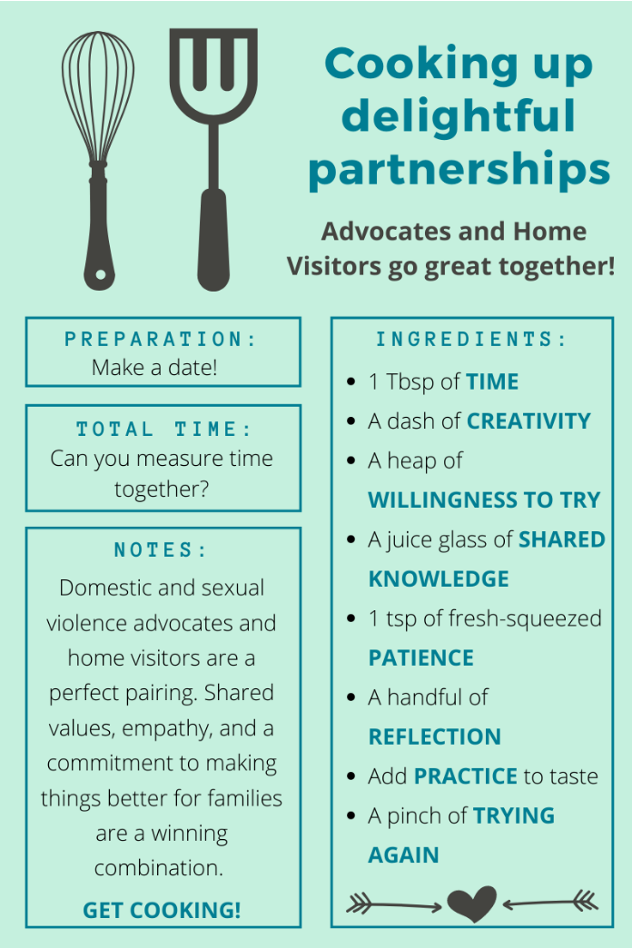
Getting started – Make the shopping list of ingredients
Start with simple ingredients. Some food, some laughter and time. Make a list of ingredients to gather:
- Togetherness: plan a day together and invite as many of the staff as possible including the supervisors or Executive Directors.
- Shared agenda: build it together.
- Shared stories: share a meal and stories about what you love about your work, and what a day looks like for each of you.
- Time: slow down and ask each other questions about how to support families experiencing coercion and abuse.
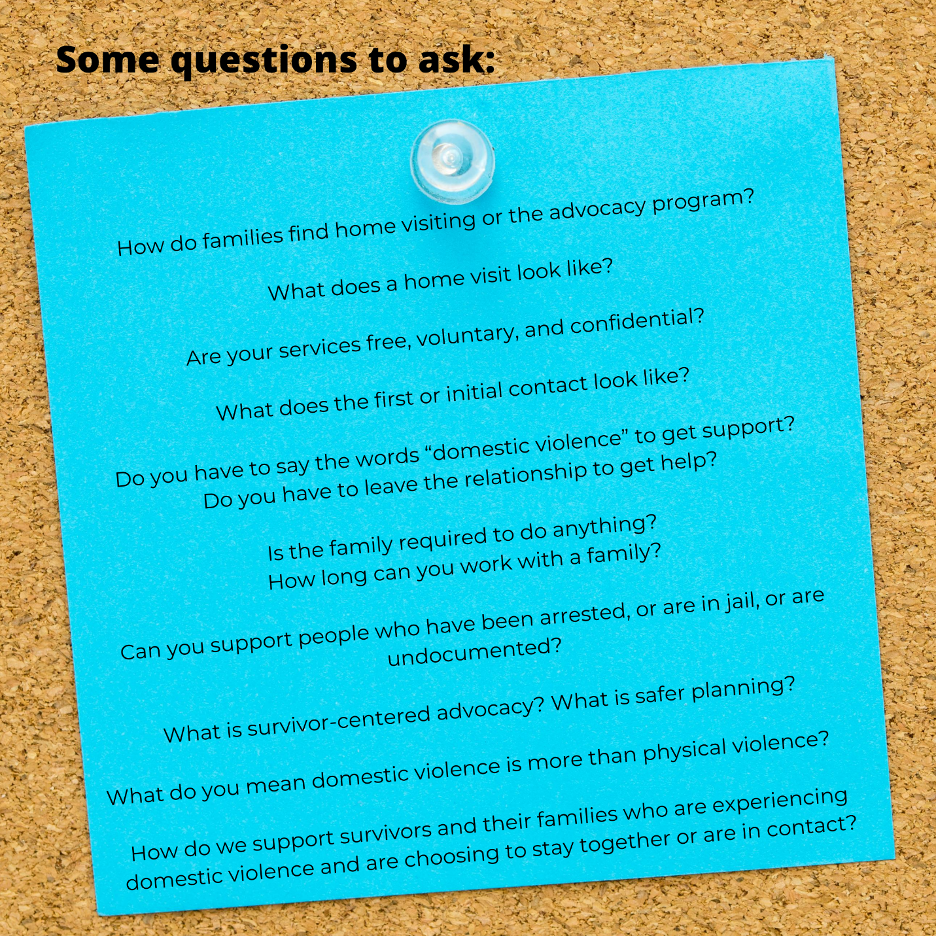
Families are expert on their situation. They know exactly what they need.
Advocate
When advocates and home visitors put in the time and learn from each other – the recipe works for everyone.
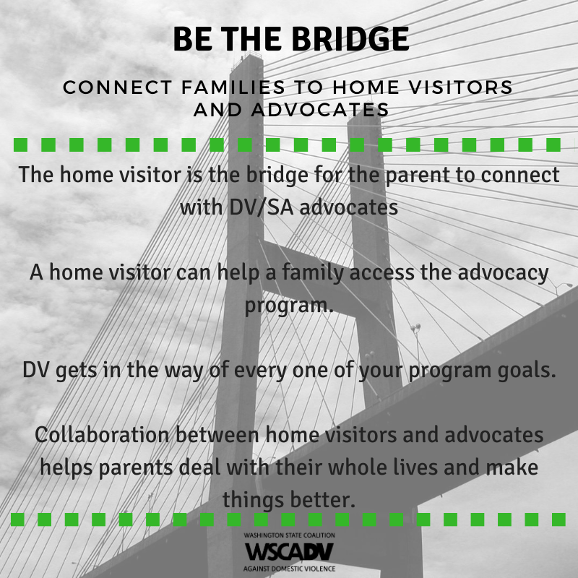
Leverage the power of your connection!
The relationship between advocates and home visitors is a community-based solution that includes the whole family. Many families want to stay together, many survivors ask us to talk to their partner. Home visitors and advocates share vulnerability and connection with survivors and their families.
Collaboration between home visitors and advocates helps parents and children with their whole lives and makes things better.
Visit together
With the survivor’s approval, advocates and home visitors could visit families together. What would that look like? What planning needs to happen to support safety and confidentiality, and how do you involve the survivor in that conversation? What can families teach us? How can we help reduce coercion and harm while and supporting the autonomy, the parenting, and decisions of the survivor and their children? We are all working to prevent coercion and abuse while increasing the survivors’ dignity and choices for themselves and their children. Prioritizing policies and approaches that increase survivor and community access to resources, education, and services, will create a future free from violence and abuse that all people deserve.
I used to think when I learned about domestic violence, obviously, you leave the situation. Now I think– what is the next level of safety that a person needs, to take a step towards it being better. Now, it is different. It is a precious and sacred thing that people are sharing. Shutting my mouth and listening. I am building more empathy for families.
Home Visitor
Get connected – find your local home visiting program
Start with local organizations in your community. If you don’t know your local home visiting program(s), start with google and enter your state’s name and “home visiting programs” to find the federally funded Maternal, Infant, and Early Childhood Home Visiting Programs (MIECHV) in your community.
“The partnership has lifted some burden from my shoulders, someone to help me and help my family. I know that if I am not there, a domestic violence advocate will support them.” –Home Visitor
Home visiting programs models like Parents as Teachers, Parent Child + and Community Outreach Doulas hire people from their communities to work in their communities – like “by and for” community-based organizations doing work locally. For Washington State, go to this link. To learn about the different models of home visiting find the MIECHV funded programs in your community.
Get connected – find your local domestic or sexual violence advocacy program
Start with local organizations in your community. You can find your local advocacy program by going to your state domestic violence or sexual assault coalition’s website. For Washington state, visit the Washington State Coalition Against Domestic Violence’s list of domestic violence and sexual assault advocacy programs.
“Biggest learning for me is that people want to be able to live in the relationship and stay together. Learning to listen, checking myself, my body language – staying open.” -Home Visitor
You can also find additional sexual assault advocacy programs in Washington here. Nationwide, go to these links to find domestic violence or sexual violence Coalitions in your state.
Resources
Our supportive tools include:
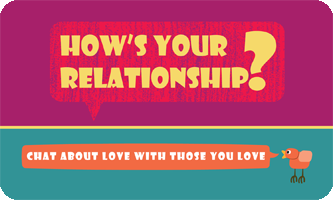
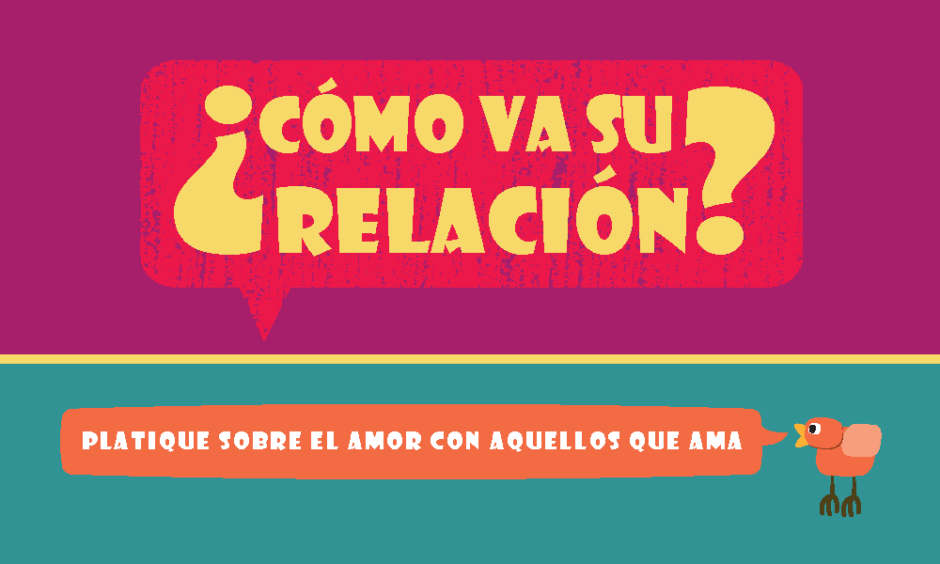
“How’s Your Relationship?” cards facilitate conversation on what fun, safe and loving relationships look like. Download a free PDF of the How’s Your Relationship? Chat about love with those you love cards in Spanish or English
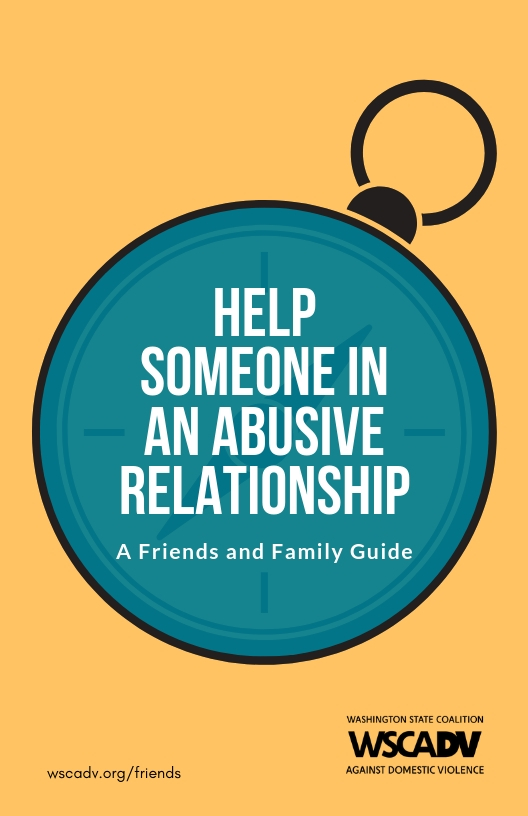
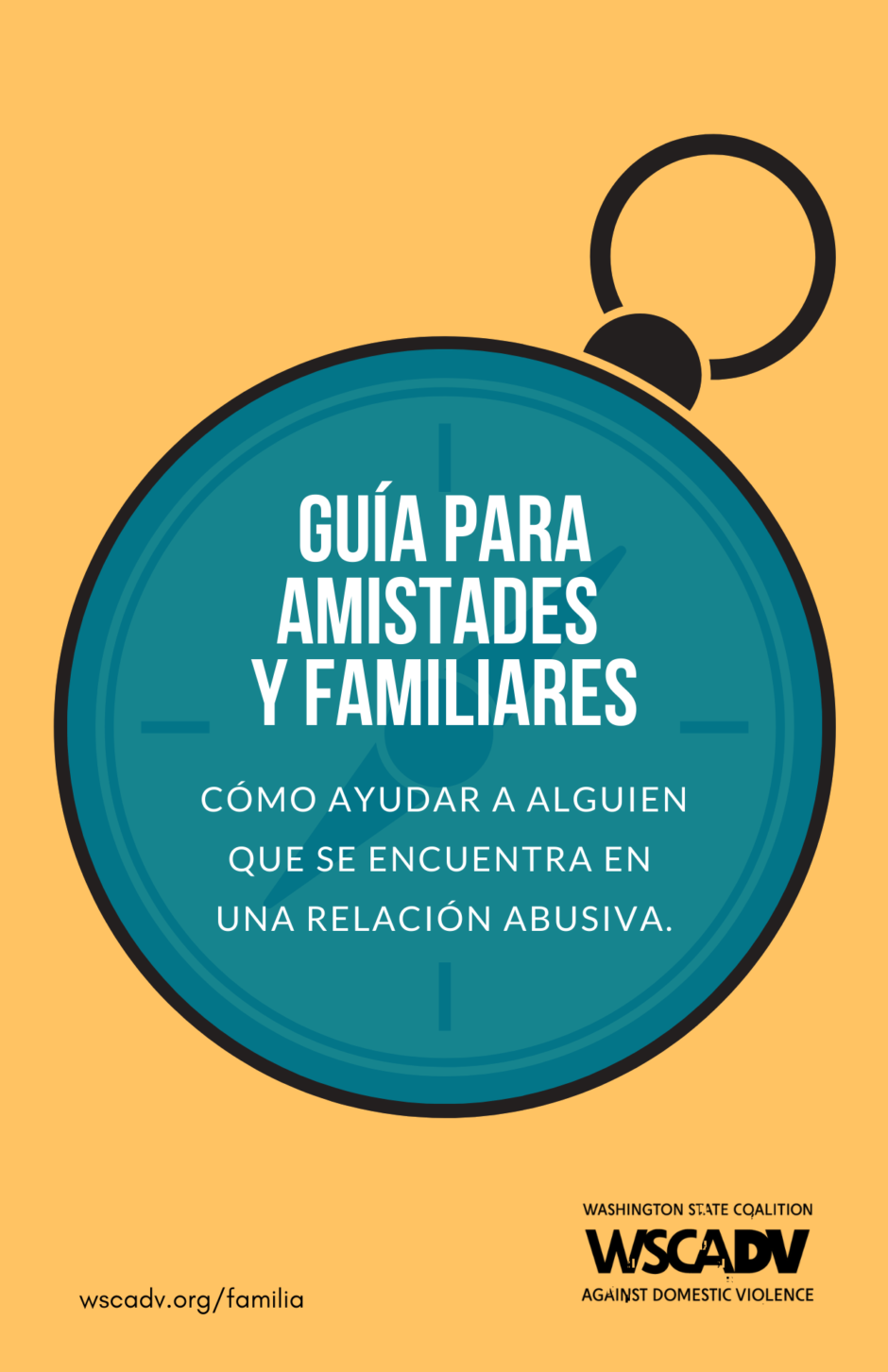
The secret in the sauce is YOU!
Give yourself and each other grace as you build your partnership. Give each other grace to make mistakes, to figure out what is working and what is not, and to try again and do better together.
Staying connected is more important than ever. While being at home isn’t safe for everyone right now, we can reach out and ask everyone how they are doing. We believe home visitors and advocates are a lifeline. Your relationship is the intervention.

Connection is an antidote to isolation, to control, to domestic and sexual violence.
Your connection matters!